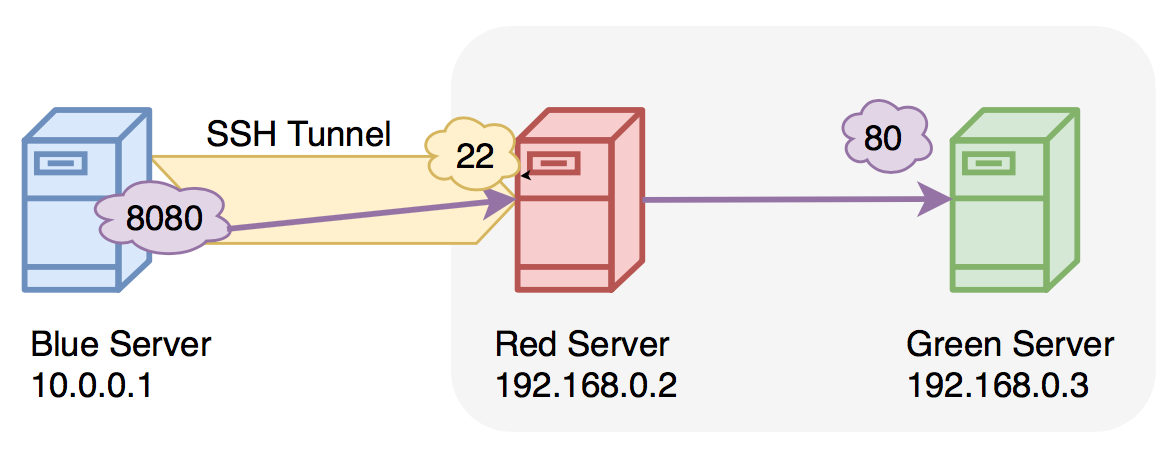

Now, you will need to set up a remote port forwarding on your local machine. Your web application running on port 80 on your local machine.Ī remote SSH server running on the public IP 10.10.0.11. You are developing a web application on your local machine and want to show a presentation to another developer in a remote place. To understand Remote port forwarding better, let's take an example. It allows you to forward a port on the remote SSH server to a port on the local SSH client machine then forward to a port on the destination machine. This method will be useful when you want to make a resource on your local machine available on the SSH server. Remote port forwarding is the opposite of local forwarding. Now, open a web browser on the Linux machine at your home and type the URL You will be able to access the webserver hosted on your office machine.
#SSH TUNNEL SSL PASSWORD#
Ssh -L 8080:192.168.0.100:80 -f will be asked to provide a root password of the server located at 10.10.0.12 to finish the port forwarding.
#SSH TUNNEL SSL WINDOWS#
On the Linux machine at your home, open the terminal windows and create a local port forwarding with the following command: Question: You want to connect to your web server running in your office machine from your Linux machine located at your home. Your web server running on your office machine on port 80 and its local IP is 192.168.0.100.Īn SSH server running in your office server on port 22 and its public IP is 10.10.0.12.Ī Linux machine at your home with an SSH client installed.

To understand local port forwarding better, let's take an example. Generally, local port forwarding is used to connect to a remote service on an internal network like a VNC server or Web server. For example, your web server is hosted on the local IP address on your machine located at your office and you want to access it from your home computer. Local port forwarding is used to forwards a connection from the machine located on the local network to the SSH server and then the destination port. In this tutorial, we will explain each with examples. There are three different types of SSH tunnelling methods. Local port forwarding allows the port on the local computer to the SSH server hosted on the remote server. In simple terms, SSH tunnelling (Port Forwarding) is a mechanism in the OpenSSH for tunnelling the application from the client machine to the server machine. You will need to set up SSH tunnelling in two scenarios, 1) You want to access remote resources that you can't access, 2) If you want people from the outside network can access your web server hosted on the local network. SSH Tunneling allows access to resources on the remote server or allows access to your local resources to someone else.


 0 kommentar(er)
0 kommentar(er)
